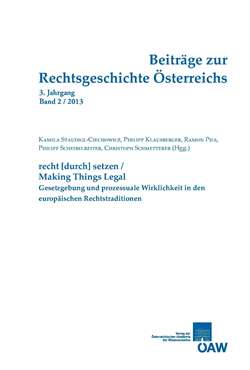
Beiträge zur Rechtsgeschichte Österreichs 2 / 2013, pp. 447-455, 2014/01/30
recht [durch] setzen - Making Things Legal.
Gesetzgebung und prozessuale Wirklichkeit in den europäischen Rechtstraditionen

The paper examines the direct democratic experience of the interwar period based on German and Estonian regulation and practice of referendums. As a background to the examination it outlines the two most important models of European direct democracy: the French plebiscitary and the Swiss direct democratic models. The French tradition is characterised by “top-down” plebiscites ordered by the president for his own political interest. The Swiss tradition is based on facultative referendums and “bottom-up” initiatives: these instruments induce state organs to involve the groups concerned into the decision-making process in order to establish a wide-ranging consensus. The constitutions of the Weimar Republic and of the Republic of Estonia contained both “top-down” and “bottom-up” instruments. However, procedural norms and the political circumstances hindered direct democratic institutions from reaching consensus and rather contributed to the strengthening of authoritarian forces which transformed the referendum into their own plebiscitary weapon.